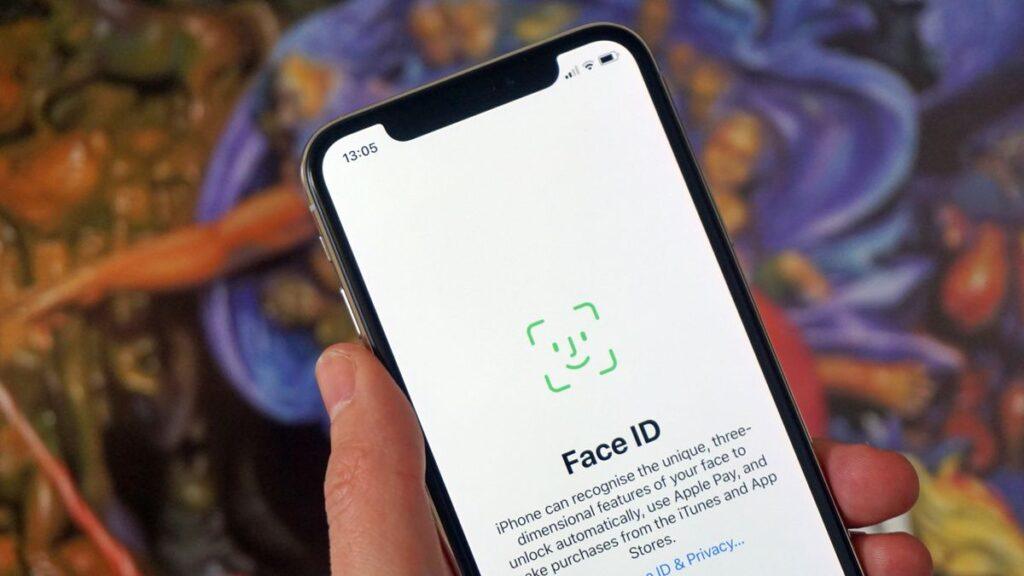- Apple has been granted a patent for a new technology that may enable in-display Face ID
- The process described removes small portions of the screen to allow infrared passage
- This tracks with year-old rumors that the feature will launch with the iPhone 17
Apple has been granted a patent for a new technology that could finally enable the long-rumored embedding of a Face ID system under the screen in the iPhone, perhaps as soon as the iPhone 17 series.
The patent describes a new possible solution to the problem of getting infrared light – which Face ID uses to scan and verify your face – through pixels under the glass of a phone screen.
Basically, Apple’s latest idea is to remove only a piece of each affected pixel, called a subpixel. Subpixels display either red, green, or blue light, which together form one of millions of colors at viewing distance.
The patent maintains that in theory there should be no difference in the final image with selected subpixels removed, as the removed subpixels will be aligned with neighboring subpixels of the same color.
The document also notes that parts of the touch-sensitive mesh could be removed to provide better infrared passage, and that these would be too small to affect touch sensitivity.
While it’s best not to jump to conclusions until we see this technology implemented, it appears that Apple is looking to develop a more detailed version of the technology that Samsung uses in the under-display selfie camera on the Galaxy Z Fold 6 – and removes only necessary components of the display to allow light to pass through.
This does not mean that an under-display camera will soon be coming to the iPhone. Rumors of an iPhone with in-display Face ID have been circulating since at least 2021, and we previously heard that an under-display selfie snapper wouldn’t arrive until iPhone 19.
More promisingly, however, we reported rumors that the technology could launch with the iPhone 17 in March 2023.
In any case, we’d generally expect a feature like this to come to the iPhone 17 Pro and iPhone 17 Pro Max before it comes to the baseline iPhones with later generations. But the implementation of the new camera control button on every new iPhone in 2024 shows that Apple isn’t completely averse to having parity across its smartphone lineup.
Keeps up the pace
As our iPhone 16 review details, the latest entry-level model from Apple marked the biggest step forward between generations in iPhone’s recent history, and is the most pro-feeling vanilla flagship Apple has ever produced.
Meanwhile, the top of Apple’s smartphone lineup—the iPhone 16 Pro and iPhone 16 Pro Max—saw significant, noticeable improvements in performance and design in 2024 as the company unified the lineup around Apple Intelligence (which is somehow still rolling out). .
Apple is often pilloried for its small annual revisions, but I’d struggle to call the company unoriginal after two straight years of major upgrades.
This is all to say that Apple has a choice when it comes to the iPhone 17: keep the momentum going or leave things as they are for another few generations. I hope this patent suggests that Apple is eager to keep improving its mobile experience at pace, leaving behind smaller incremental steps like the one between iPhone 13 and iPhone 14 in the past.
I’d certainly be impressed to see such complex and original technology integrated with the display, as long as it was done well – Apple is often hamstrung by its little annual revisions, but I’d struggle to call the company unoriginal after two in a row. years of major upgrades.
Face ID is the main reason iPhones have the pill-shaped Dynamic Island, which, while still relatively slim and decently usable, is now one of the largest cutouts seen on a flagship phone – most manufacturers opt for a simple punch-hole selfie -camera.
Of course, Apple’s competitors don’t use infrared-based facial recognition, so there’s less to look out for at the top of the screen, but there’s still a striking visual difference between the black dot left by the selfie cameras on the Samsung Galaxy S24 and Google Pixel 9 and the darkened bar, there is the dynamic island.
For those with an appreciation for technical specifications, it would be an impressive technical feat to see the Face ID system disappear under the iPhone’s display, the equivalent of the first under-display fingerprint scanners.
Whether under-display Face ID makes it to consumers with the iPhone 17 series, a later generation, or not at all depends on whether Apple intends to implement its new patent. If you don’t feel like waiting, be sure to check out our list of the best iPhones to get an overview of the latest and greatest Apple phones.



